Tableau Cloud
This page will guide you through the setup of Tableau Cloud in K using the direct connect method.
Integration details
Scope | Included | Comments |
|---|---|---|
Metadata | YES | |
Lineage | YES |
|
Usage | YES | |
Sensitive Data Scanner | N/A |
Step 1) Create KADA PAT token
PAT tokens expire after 1 year. You will need to refresh the token in K after it expires. See https://help.tableau.com/current/server/en-us/security_personal_access_tokens.htm for more details
This step is performed by a Tableau Cloud Admin. The Admin must have
Site Administrator Creatorrole.Log into your Tableau cloud instance
Go to My Account settings

Go to Personal Access Token
Create a Token
Give the Token a name such as “KADA”
Click Create new token

Copy the Token name and token value for use later on
Go to Language and Region
Set Language to English United Kingdom. Click Save changes
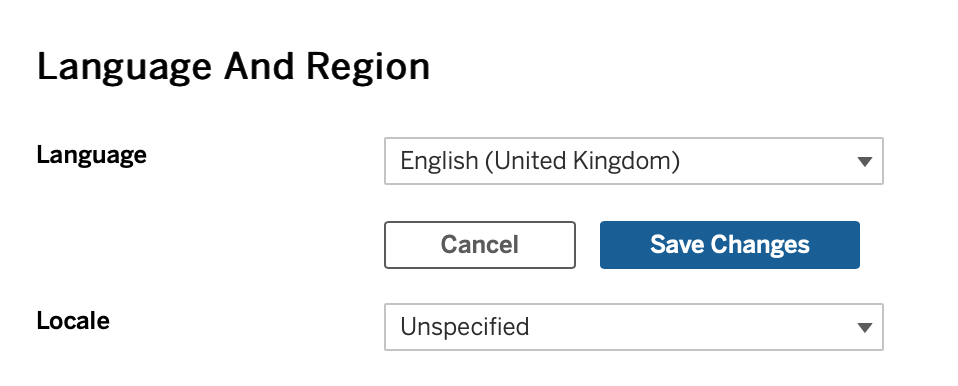
Step 2) Setup KADA metadata workbook
In Tableau Cloud portal, go to Explore tab in the sidebar
Create a project called KADA. This will be used to store the KADA workbook which holds the metadata for extraction.
Go to the Admin Insights project
Open and edit the Admin Insights Starter Workbook. Make a copy of this workbook called KADA and publish it to the KADA project (created in the step above)
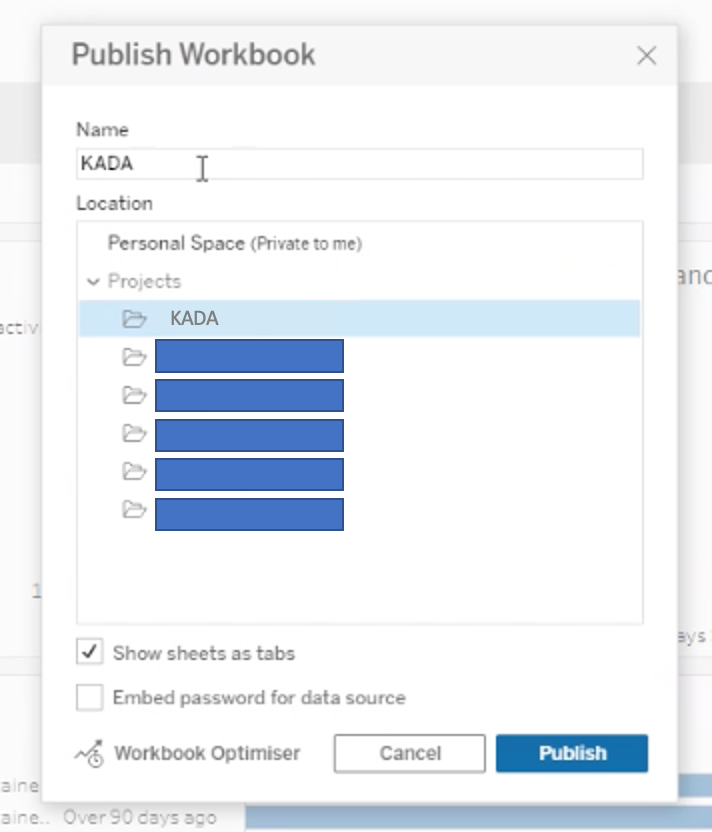
Step 3) Editing the KADA metadata workbook and sheets
The names of the sheets and fields to be added must to match exactly.
Open the KADA workbook that was created in Step 2. We will create 2 sheets to store metrics to extract.
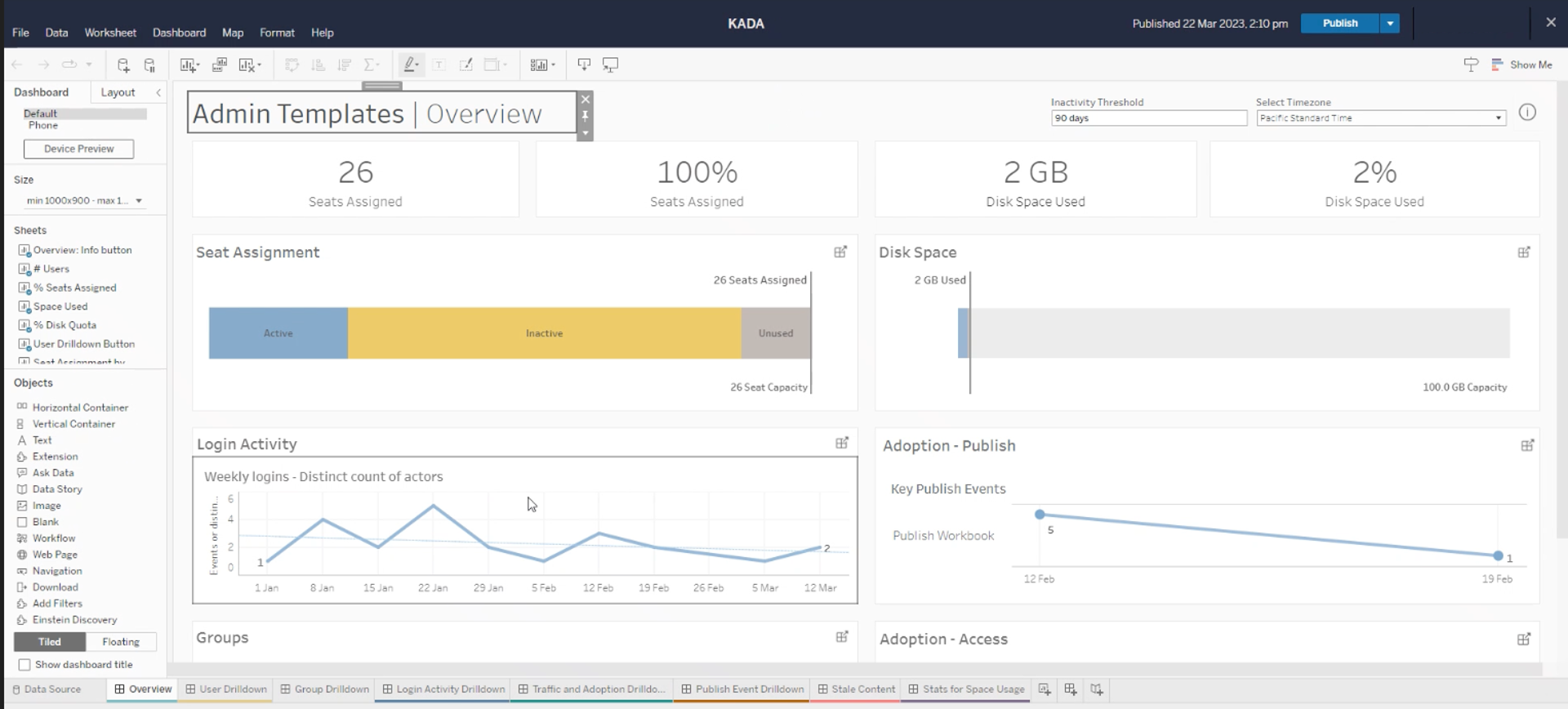
The copy of the Admin Insights workbook should look like this.
Create a new sheet in the workbook called kada_ts_events
Add the following fields to the kada_ts_events sheet’s Rows
Event Date.
Right click and set the event date to exact date. Set the event date to discrete (instead of continuous which is the default setting).
Event Name
User Name
Item Id
Item Type
It should look like this screenshot. There should be a date per row. No rows should be aggregated.
Create another new sheet in the workbook called kada_site_content
Add the following fields to the kada_site_content sheet’s Rows
Item Id
Item Type
Item LUID
It should look like this screenshot
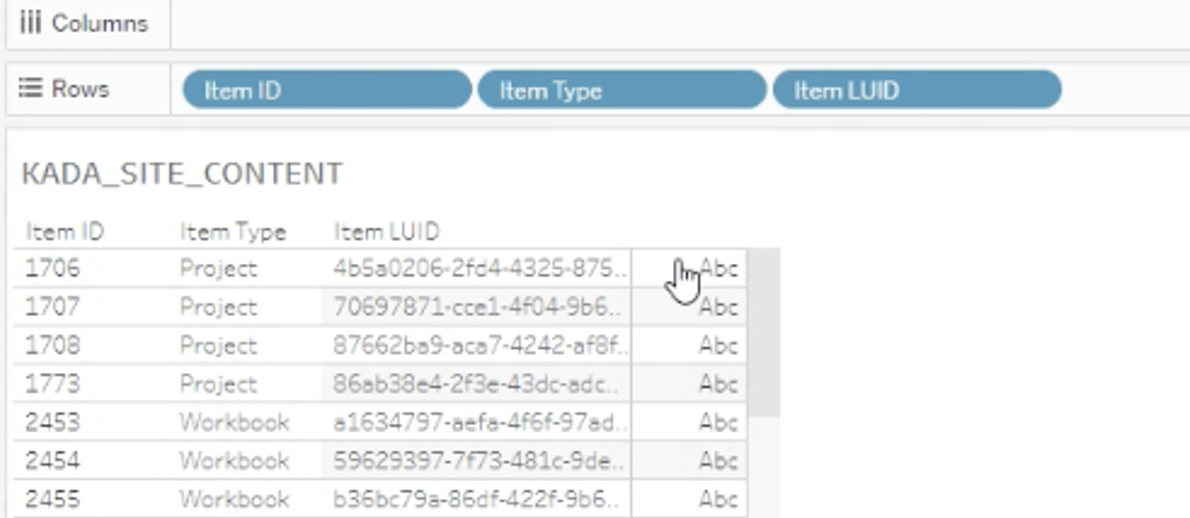
Publish the workbook
Step 4) Setup the source in K
Log into K
Select Platform Settings in the side bar
In the pop-out side panel, under Integrations click on Sources
Click Add Source and select Tableau Cloud
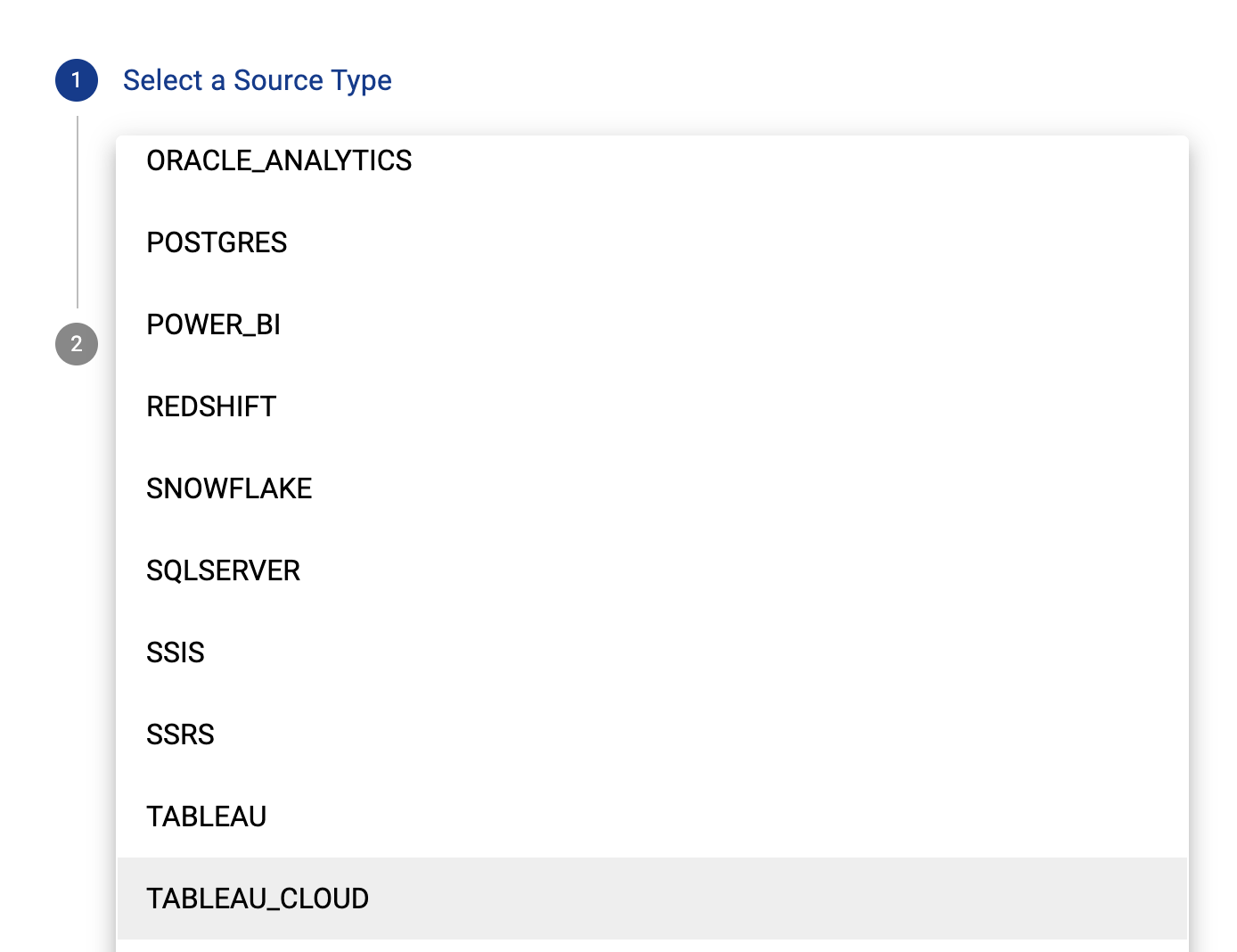
Select Direct Connect
Fill in the Source Settings and click Save & Next
Name: Give the Tableau Cloud source a name in K
e.g. Acme Inc Tableau cloud
Host: Use your Tableau Cloud base URL
e.g. prod-apsoutheast-a.online.tableau.com
Sites: This is the site name which you can find in the URL when you log into Tableau cloud
e.g. https://prod-apsoutheast-a.online.tableau.com/#/site/<customer_name>/home
KADA Workbook Site Content View Name: The name of the Site Content sheet you added in Step 3.
Change this value only if you have used a different name (including case).
KADA Workbook TS Events View Name: The name of the Event sheet you added in Step 3.
Change this value only if you have used a different name (including case).
Enter your API and Token details and click Save
API URL: Use your Tableau Cloud base URL
e.g. https://prod-apsoutheast-a.online.tableau.com/
Token name: Add the name of the PAT token you created in Step 1
Key or Token: Add the token value of the PAT token you created in Step 1.
Check the connection by clicking Test connection
Click Save & Finish
Step 5) Manually run an ad hoc load to test
Next to your new Source, click on the Run manual load icon

Confirm how your want the source to be loaded
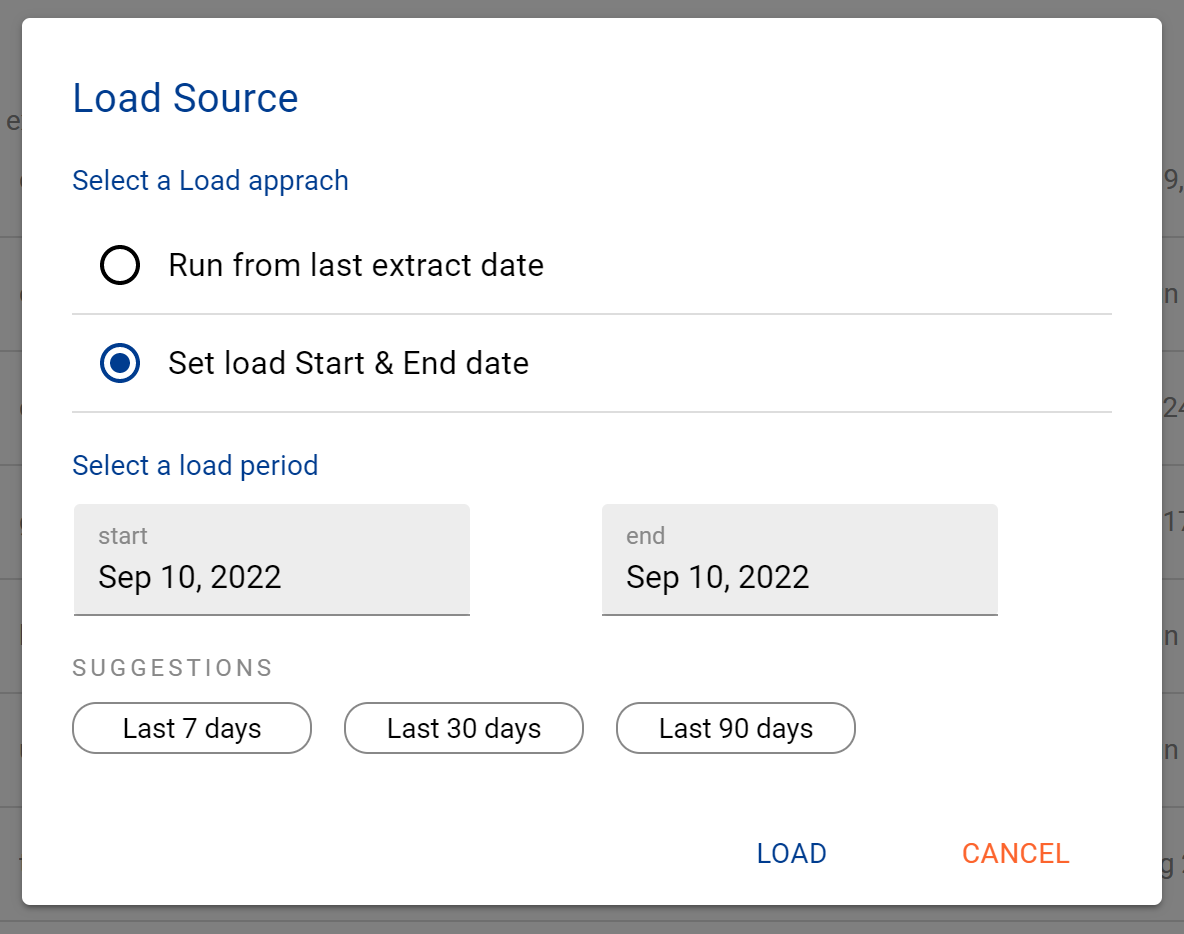
After the source load is triggered, a pop up bar will appear taking you to the Monitor tab in the Batch Manager page. This is the usual page you visit to view the progress of source loads
A manual source load will also require a manual run of
DAILY
GATHER_METRICS_AND_STATS
To load all metrics and indexes with the manually loaded metadata. These can be found in the Batch Manager page
Troubleshooting failed loads
If the job failed at the extraction step
Check the error. Contact KADA Support if required.
Rerun the source job
If the job failed at the load step, the landing folder failed directory will contain the file with issues.
Find the bad record and fix the file
Rerun the source job
If you noticed that some reports do not have lineage
